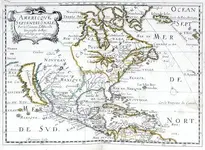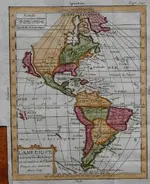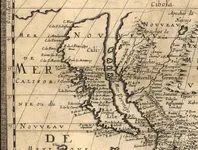Greetings Carajou, Real de Tayopa and everyone,
This is one of the most fascinating and seemingly far-fetched of the many tales of the old southwest. It strikes one as utterly un-believable on first hearing it, and until one can get past the first impression (that it is fiction) to actually investigate the matter it is highly likely you will dismiss the story out of hand.
I say that because I had that very impression, that this was one of those tales told round the Mahogany Ridge (local alcoholic beverage establishment) for the entertainment and edification of the gullible and/or tourists. It took me several years to even bother to check into it, I had already built such a bias against the story that I did not see any (good) reason to waste time investigating it. However a friend on the desertusa forum convinced me to at least have a look into the matter, and I was slow to come round but now am convinced this is a TRUE tale!
The fact is, Captain Juan de Iturbe was dispatched to explore the Pacific coast by the king of Spain in 1610 , and to harvest as many pearls as possible while exploring. Iturbe was under command of a Captain Cordone, among a little squadron of three, (forgive any detail errors please, working from memory here as my file cabinets are still in storage – but some day SOON I plan to get into them so could fill in more exacting details) relatively small ships, not the huge Spanish galleons but sloops or brigantines. The report was that Iturbe was quite successful in harvesting pearls, filling the holds of all of his little squadron (or nearly so) and they continued on up the gulf of California searching for a passage round the northern end of California “island” as they expected it to be, based on their best maps of the day. This was the reason why Iturbe sailed up the Colorado river, and when his lookouts spotted a channel of the river flowing to the west, he assumed this must be emptying one mouth of the Colorado river into the northern end of the expected “channel” which would separate California “island” from the mainland, so sailed right into a large body of water with mountains on both shores. Sailing up this “bay” as he thought, he must soon find the north end of California “island” and be able to sail right round it, only to find that the waters grew shallower and shallower as he sailed north! He ordered the ship turned round and they explored the coastline of this “bay” (actually an inland lake formed by a massive flood of the Colorado river which broke through the rather low banks that separate it from the Salton sink) and went up every opening along the shore expecting to find a connection to the Pacific, or at least into another bay which would then connect to the Pacific – and ended up back where he had entered the lake (as he now understood it was) only to find that the Colorado had fallen from its flood stage and it was no longer possible to get back into the gulf of California! He had his ship sail back up the coast of the now-sadly-understood inland lake, growing more desperate by the hour, in a frantic search for any connecting channel or outflow that would allow him to sail back to the Pacific, but another complete circumnavigation of the lake, checking every canyon and opening, failed to find any way to get back to the open sea. In fact they even noticed that the level of the lake waters were receding, while they were in the act of sailing around it.
With the lake slowly but surely shrinking before their very eyes, Iturbe and his desperate crew sailed their sloop up into a box canyon where it might be somewhat protected (and perhaps could be returned to, to recover the huge haul of pearls as well as valuable porcelain from Chna) and deliberately ran her aground. Offloading the basics they would need for a long over-land trek, and but few pearls, the crew set off to return to civilization. They were eventually successful, and made it back to rejoin their compadres; however the authorities (even then) did not put much faith in Iturbe’s report of having accidentally sailed into a land-locked lake and cast aspersions as to his motives, dark suggestions were made that he had “turned pirate” and hid his gains, which was why he requested another ship to return to the site and recover the load of pearls and other treasure. So they refused to send Iturbe back, but did dispatch another sloop which went to the Colorado river and sailed up it some distance, but did not find any connecting channel into some now-mythical land-locked lake, so returned without Iturbe’s pearls and this cast further doubt on his report. As far as I could find in the old records that was the end of any attempts to recover the “ship of pearls” by Spanish officials.
During the Anza expedition (1775) from Sonora to California overland to found a new military presidio in California as well as open an overland route to the Spanish colonies in CA, one of the mule drivers of the expedition was sent out on detached service to try to find a water source while the small army (which included the families of the soldiers as well) was crossing the Salton sink. I can’t recall his name, but he could hardly believe his eyes when he walked up a box canyon and spotted the masts of a ship, then the hulk of the ship itself lying half-covered in sands. Out of curiosity he went into the ship and found the hold full of pearls! He loaded as many of the pearls as he could into his pack and decided on the spot to quit de Anza’s expedition, setting off on foot to the California settlements on his own – to sell his new booty and get equipment to return for the rest. He managed to get to the settlements alive, (through the assistance of friendly Indios) and made a fortune from his pearls, then equipped himself to return with an Indian guide as a help-mate. He failed to find the ship!
There have been quite a number of reports of sightings of this ship, and the exact site is going to be tough to pin down! It may be in Mexico, or it may be in CA – for I found newspaper reports of a man who lived outside of the town of Niland, who had a strange source of Spanish coins in his back yard! According to neighbors, this fellow had dug up something in his back yard that he would disappear into (as if it were some kind of underground chamber) and come out with coins. He never allowed anyone to enter his mysterious underground chamber, but always had plenty of Spanish coins as well as fine porcelain from China, and after a year of mysterious workings in his back yard, left town as a very wealthy man. Did he find the lost ship, buried in his back yard? If it were the pearl ship, why didn’t he turn up with pearls?
To make matters even more confusing, the Pearl ship is not the ONLY ship believed to be lost in the Salton sink! An English privateer, repeating history, sailed up the Colorado river during a huge flood and found a strange channel flowing west so sailed down it, perhaps expecting to find a new way around California but at any rate ended up very much the same way as Iturbe’s sloop, trapped in a fast-evaporating land-locked lake. This ship would have a great treasure of gold and silver, and almost certainly Chinese porcelain as it had been attacking Spanish galleons on the China trade route. There is another ship that I can’t recall much in the way of details, which was supposedly carried into that same desert basin by a massive tidal wave in the 1800s, which also cast a ship aground near the mouth of the Colorado river at the same instant.
There is also a ship which was being hauled across the desert which was abandoned when the going got too soft, and was the subject of many curious sighting reports. Even stranger is the fact that the local Indian tribes have legends of ancient ships being trapped in the same region, as has been cited by another post here, BEFORE the arrival of the Europeans! To back this up, there are a handful of reports of sightings which can only be describing a quite ancient ship, either something Norse or Phoenician in origins. There is solid evidence to back these very puzzling reports, in the form of photographs! They have been published in a newspaper but I have not (yet) managed to track them down, nonetheless the description of what is in the photos is of a long, narrow ship, with round metal discs (shields?) along the sides and metal covering the hull, a single old mast still erect, and what appears to be oars along the sides. There were a type of Spanish galleon which was also equipped with oars, but odds are this is a very ancient ship, 1000, 2000 or even more years old. Can wood survive in the desert that long, with the termites and all? Yes, though the wood remaining would be as fragile as Styrofoam.
Kimimik wrote:
“Actually the Salton Sea was only formed 100 years ago. The actuall sea never reached that far north. There was an ancient lake that was created by the Colorado River, but it was a fresh water lake and it dried up around 1600. In 1907, a levee broke in Yuma that flooded the Salton Basin and formed the Salton Sea. It is misleading being called a "sea", one would logically assume that it is a remnant of the sea receding, but it isn't. Here is a link to some more information. Hope it helps guide you in the right direction. I suggest that you might want to check out geology sites and research information on the landformations at the time the ship was lost. Don't just go on legends and rumors as I am sure we all have learned, they get us no where. You will find much more success if you look at it scientifically.”
I beg to differ here – for one, according to a geologist friend of mine, the gulf of California did connect with the Salton sink, but over a thousand years ago the increasing sand deposits of the Colorado river eventually sealed it off. (Check this site:
http://www.sci.sdsu.edu/salton/EnvirnEconValueSaltonSea.html
and
http://www.waterrights.ca.gov/IID/IIDHearingData/LocalPublish/Exhibit_22.pdf
here is one quote to back this up, quote
The Salton Basin was once connected to the Gulf of California and was
characterized by a shallow marine environment (Downs and Woodward 1961). For the
past several million years, as the Colorado Plateau was uplifted, the sediments that once
filled the Grand Canyon were deposited in the Gulf of California, eventually building a
huge delta, blocking off the Salton Basin from the ocean. The deltaic dam is now forty
feet above sea level, with a drainage divide about 17 miles south of Mexicali, Mexico
(Dibblee 1954).
End quote, from TESTIMONY OF DR. TIMOTHY P. KRANTZ, Salton Sea Database Program, University of Redlands, To Be Presented to the State Water Resource Control Board, April 30, 2002
So not to nit-pick here but the idea that the Salton sink or trough was never connected to the open sea is mistaken; in fact most of the trough remains below sea level even today despite a continuous geologic uplift raising the entire region slowly – the lowest point is over 200 feet below sea level.
I then must disagree whole-heartedly with this statement: “Don't just go on legends and rumors as I am sure we all have learned, they get us no where. “ – those old legends and myths are pretty much ALL based on facts. I could list a great many instances of successful researchers finding long-lost and long-believed to be mythical ships, treasures and even whole cities, such as the finding of Troy by Schliemann, Helike, the Greek city which suffered the same fate as Atlantis (can't recall the names of the discoverer, but you can find it if you are curious) the Atocha by Mel Fisher (who before his death had recovered over $400 million, and the ship continues to produce still more booty even today) or in lost mines the Tayopa by my friend Real de Tayopa, and many more but this post is already getting really long so will simply point out that by all means execute your search in a scientific manner, be methodical and thorough, but NEVER dismiss those old “legends” as a waste of your time!
I have never had a chance to search for this most fantastical lost treasure, the Pearl ship of the desert, but (God willing and the crick don’t rise, as they used to say in PA) assuming I don’t get too danged crippled up I plan to some day. So if you are ready to dismiss the whole story and write it off to fiction, heck I won’t mind a bit – it is a certainty then that you won’t find it, and at the very least we won’t be tripping over each other digging in the sands over there! (hee hee)

Oroblanco
Remember the wisdom of the ancients…
There is nothing concealed that will not be disclosed, or hidden that will not be made known. Matthew 10:26 KJV NT
For there is nothing hidden that will not be disclosed, and nothing concealed that will not be known or brought out into the open. Luke 8:17 KJV NT
For nothing hidden will not become manifest, and nothing covered will remain without being uncovered. Gospel of Thomas, 11



 you find that they show CA., as an Island!
you find that they show CA., as an Island! 





